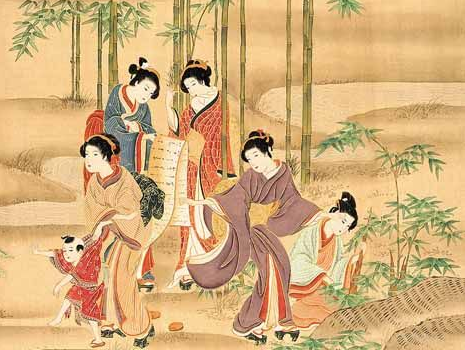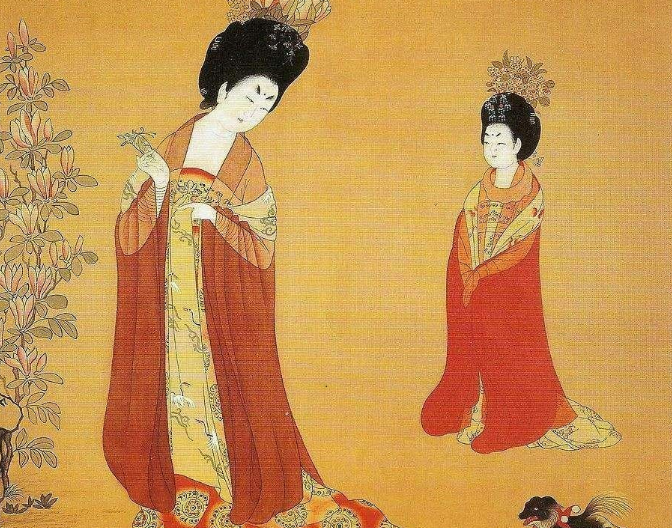Court Hanfu was luxurious, featuring silk and elaborate designs, symbolizing status, whereas commoner Hanfu was simpler, made from practical materials like cotton or linen, reflecting daily life.
Historical Evolution of Hanfu
Hanfu, traditional attire of the Han Chinese, reveals a rich tapestry of history through its evolution. Originating over millennia ago, this elegant and culturally significant dress has transformed across various dynasties, each adding unique elements to its design.
Early Han Dynasty Styles
The early Han Dynasty saw the birth of Hanfu as a simple, functional garment. Its design catered to agricultural work and daily activities. The typical Hanfu featured a Y-shaped cross-collar, tying left over right, blending functionality with aesthetic appeal. Silk use, a Chinese cultural symbol, started to flourish, enhancing the garment’s status.
Fabrics in this era were light and breathable, suiting the agrarian lifestyle. Colors were usually muted, reflecting the available natural dyes. Intricate embroidery and patterns, inspired by religious and philosophical beliefs, began to adorn these garments. Dragons, phoenixes, and other mythological motifs symbolized various virtues and societal values.

Transition in Hanfu Styles from Han to Ming Dynasties
Moving towards the Ming Dynasty, Hanfu underwent significant changes. The Tang Dynasty’s openness to cultural exchange introduced new styles, fabrics, and colors. Hanfu became more elaborate, with wider sleeves and brighter colors, mirroring the era’s prosperity and cosmopolitan nature.
The Song Dynasty marked a shift towards a more conservative and refined Hanfu. Garments became form-fitting, with subtler colors and designs, reflecting Confucian ideals of modesty and restraint.
By the Ming Dynasty, Hanfu had evolved into a highly sophisticated attire. New weaving and dyeing techniques allowed for more vibrant colors and intricate designs. The ‘Ming-style’ Hanfu, known for its stand-up collar and straight lapels, became prominent. This period also distinguished the attire of the elite from that of commoners, with finer fabrics and more elaborate designs for the former.
Throughout these transformations, Hanfu remained a symbol of Chinese identity and cultural pride. Its evolution mirrors China’s rich cultural heritage and the ingenuity of its people. From simplicity to sophistication, Hanfu not only dresses but also tells the story of Chinese history and values.
Court Hanfu
Court Hanfu, the regal attire worn in ancient Chinese courts, epitomizes elegance and imperial authority. Reserved for royalty and high-ranking officials, it distinguished the upper echelons of society from commoners.
Fabric and Embellishments Used in Royal Attire
The choice of fabric in court Hanfu was always luxurious. Silk, the most favored material, symbolized status and wealth. Emperors often wore brocade, a richly decorative shuttle-woven fabric, often made with colored silks and sometimes with gold and silver threads. The use of gold threads was not just for aesthetic appeal but also a demonstration of the monarch’s affluence.
Embroideries on court Hanfu were intricate, often depicting dragons, phoenixes, and other mythological creatures, signifying power and divine favor. The number of clawed toes on the embroidered dragons was a strict indicator of rank; the five-clawed dragon was reserved exclusively for the emperor.
Symbolism in Court Hanfu
Colors in court Hanfu held significant symbolism. Yellow, the color of the earth’s center in traditional Chinese cosmology, was exclusively for the emperor, symbolizing his central role in the universe. Other royals wore purple, associated with nobility and spirituality.
Design elements of court Hanfu were deliberate and meaningful. For instance, the round collar symbolized heaven, while the square hem represented the earth, reflecting the emperor’s role as the celestial intermediary. The use of jade buttons and other precious stones further emphasized the wearers’ high status.
Each aspect of court Hanfu, from the fabric to the colors and designs, was a meticulous representation of power, hierarchy, and cultural values. It was not merely clothing but a canvas displaying the rich tapestry of ancient Chinese traditions and beliefs.
Commoner Hanfu
Commoner Hanfu, the traditional attire worn by the general populace in ancient China, was a far cry from the opulent court Hanfu. It was designed for practicality and comfort, reflecting the daily lives and needs of the common people.
Materials and Practicality in Everyday Hanfu
Commoners typically used more affordable and durable materials for their Hanfu. Cotton and linen were widespread, offering comfort and ease of movement for everyday tasks. Unlike the luxurious silks of the court, these fabrics were practical for work and daily wear. Commoner Hanfu featured simpler designs, with fewer layers and embellishments, making it more suitable for labor-intensive activities.
The colors of commoner Hanfu were generally muted, as bright colors and elaborate patterns were reserved for the upper class. This distinction in fabric and color not only differentiated social classes but also made Hanfu more accessible and practical for the general populace.
Regional Variations in Commoner Hanfu Styles
Hanfu styles varied significantly across different regions of China, influenced by local climates and cultures. In the colder northern regions, Hanfu had more layers and longer sleeves for warmth. In contrast, the southern styles were lighter and airier, suitable for the warmer and more humid climate.
Distinct regional patterns and embroideries also emerged, reflecting local customs and beliefs. For example, Hanfu in the coastal areas might feature motifs of waves or marine life, while those in inland regions might display patterns inspired by local flora and fauna.
Each regional style of Hanfu tells a story of the people who wore it, their environment, and their way of life. These variations not only added diversity to the traditional attire but also served as a cultural identifier for the various communities across ancient China.
Commoner Hanfu was a manifestation of practicality, regional diversity, and cultural identity. Its simplicity and versatility made it an integral part of daily life for the masses, and its regional variations painted a vivid picture of the rich and diverse tapestry of ancient Chinese society.

Comparative Analysis: Court vs. Commoner Hanfu
The distinctions between court and commoner Hanfu in ancient China are profound, reflecting not only social status but also cultural values and societal norms.
Differences in Style, Fabric, and Ornamentation
Court Hanfu was distinguished by its luxurious fabrics, such as silk and brocade, often woven with gold and silver threads. It featured complex designs with multiple layers, including intricately embroidered robes and wide sleeves. These garments were rich in ornamentation, including jade and precious stones, and were exclusive to the imperial family and nobility.
In contrast, commoner Hanfu was much simpler and more functional. Cotton and linen were the primary materials, chosen for their durability and comfort in everyday work. The styles were less elaborate, with fewer layers and minimal embroidery. Colors were subdued, adhering to social regulations that reserved bright and intricate designs for the elite.
This stark contrast in fabric and ornamentation between court and commoner Hanfu was not just a matter of fashion but a reflection of the strict social hierarchy that governed ancient Chinese society.
Societal Implications of Hanfu Styles in Historical Context
Hanfu styles were deeply intertwined with societal structures and cultural norms. Court Hanfu, with its opulence, underscored the authority and divine status of the emperor and the nobility. The luxurious fabrics and elaborate designs were symbols of power and wealth, intended to differentiate and elevate the elite above the common populace.
On the other hand, commoner Hanfu, with its simplicity and practicality, reflected the daily lives and needs of the majority. The modest styles and durable fabrics were suitable for the labor-intensive lifestyle of the common people. This clear demarcation in clothing styles reinforced social stratification and communicated the societal roles and expectations placed upon different classes.
In conclusion, the comparison between court and commoner Hanfu reveals much about the values, social structures, and cultural practices of ancient China. These differences in attire were not mere fashion choices but powerful symbols of status, authority, and societal order.







